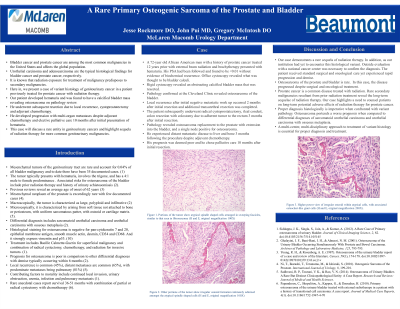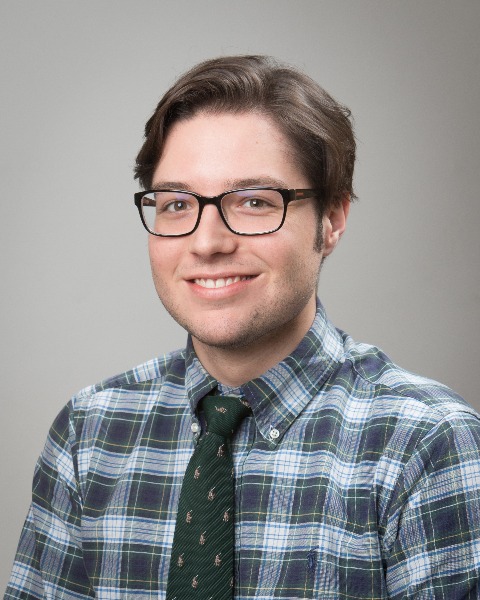Urological Surgery
A Rare Primary Osteogenic Sarcoma of the Prostate and Bladder

Has Audio
Introduction/Purpose: Malignant mesenchymal tumors comprise less than 1% of urinary bladder malignancies. An estimated 35 cases of osteosarcoma of the bladder have been reported. The prognosis of osteosarcoma of the bladder is poor and the course is aggressive. Our case describes a rare finding of osteosarcoma of the bladder and prostate from initial diagnosis, through treatment, progression, and demise.
Methods or Case Description: A 72-year old man with a history of prostate cancer treated 12 years prior with radiation presented with hematuria. Cross-sectional imaging and office cystoscopy revealed what was thought to be bladder calculi. Rigid cystoscopy revealed an obstructing calcified bladder mass that was resected. Pathology confirmed at the Cleveland Clinic revealed osteosarcoma. The patient subsequently underwent radical cystoprostatectomy. Pathology revealed osteosarcoma replacement to the prostate with extension into the bladder, negative margins, and a single node positive for osteosarcoma. He experienced distant metastatic disease 3 months following the procedure despite adjuvant chemotherapy. His prognosis was deemed poor and he chose palliative care.
Outcomes: Our case demonstrates a rare sequela of radiation therapy. In addition, as our institution had yet to encounter this histological variant, outside evaluation with a national cancer center was necessary to confirm the diagnosis. The patient received standard surgical and oncological care yet experienced rapid progression and demise.
Conclusion: Osteosarcoma of the prostate and bladder is rare. In this case, the disease progressed despite surgical and oncological treatment. Prostate cancer is a common disease treated with radiation. Rare secondary malignancies resultant from prior radiation treatment reveal the long term sequelae of radiation therapy. Our case highlights a need to counsel patients on long-term potential adverse effects of radiation therapy for prostate cancer.
Methods or Case Description: A 72-year old man with a history of prostate cancer treated 12 years prior with radiation presented with hematuria. Cross-sectional imaging and office cystoscopy revealed what was thought to be bladder calculi. Rigid cystoscopy revealed an obstructing calcified bladder mass that was resected. Pathology confirmed at the Cleveland Clinic revealed osteosarcoma. The patient subsequently underwent radical cystoprostatectomy. Pathology revealed osteosarcoma replacement to the prostate with extension into the bladder, negative margins, and a single node positive for osteosarcoma. He experienced distant metastatic disease 3 months following the procedure despite adjuvant chemotherapy. His prognosis was deemed poor and he chose palliative care.
Outcomes: Our case demonstrates a rare sequela of radiation therapy. In addition, as our institution had yet to encounter this histological variant, outside evaluation with a national cancer center was necessary to confirm the diagnosis. The patient received standard surgical and oncological care yet experienced rapid progression and demise.
Conclusion: Osteosarcoma of the prostate and bladder is rare. In this case, the disease progressed despite surgical and oncological treatment. Prostate cancer is a common disease treated with radiation. Rare secondary malignancies resultant from prior radiation treatment reveal the long term sequelae of radiation therapy. Our case highlights a need to counsel patients on long-term potential adverse effects of radiation therapy for prostate cancer.

Jesse C. Rockmore, DO
Urology Resident
Mclaren Macomb
Charter Township of Clinton, MI, US- GM
Gregory McIntosh, DO, FACOS
Michigan Institiute of Urology
Bloomfield Township, MI, US
